| Issue #124 • July/August, 2010 |
When friends stop by for a visit I like to offer them a hospitable and healthful libation of elderberry cordial. When served in a small aperitif glass or brandy snifter this lovely violet libation may be visually enjoyed along with its mellow, berry-like flavor.
While this homemade elixir makes a delightful, palate-pleasing drink, it also packs health-giving and immune system-stimulating qualities, as well. Nor does my annual harvest of elder flowers and berries stop simply with cordial making. Elderberries—the fruits of the elder—have countless uses such as juice, wine, jelly, jam, pie, syrup, and tea.
Wild and domestic elders
In my gardens I have both wild and domestic elders. These plants may be called “elders” or “elderberries” interchangeably.
Wild elders, members of the honeysuckle family Caprifoliaceae, are found throughout Canada and the United States all the way to the borders of Mexico. Elders occupy wooded areas, fields, and moist places along river and creek bottoms, as well as desert washes receiving somewhat regular moisture. The species native to my home state, Utah, is called Sambucus cerulean and grows throughout the Intermountain West at elevations of 5,000 to over 7,000 feet. Although wild elders generally prefer moist, well-drained soils, those in my back garden receive little supplementary water other than seasonal snow and rain and simply grow more slowly as a result.
In other areas of Canada and the U.S. the wild varieties Sambucus canadensis or Sambucus mexicana are more commonly found. In addition to the culinary uses of elders, the healing properties of both wild and domestic types are similar.
All edible elders are characterized by creamy white to yellowish or pink clusters of flowers. Hand-sized, flat sprays of tiny, lacy flowers held at the ends of branches in summer give way to bitter green berries that quickly ripen to reddish then burgundy-black or blue, depending upon variety.
Elders with fruits ripening to red (Sambucus racemosa L.), yellow (Sambucus callicarpa), or white (Sambucus racemosa pubens) are mildly to moderately toxic and should not be used internally, although their external medicinal uses are similar to other elderberries.
Wild elders are usually found as small trees growing 12 to 20 feet high with a trunk up to eight inches in diameter and are highly valued for their flat, lacy clusters of tiny creamy flowers that produce clusters of blue-black berries. Native varieties Sambucus cerulean, Sambucus mexicana, and Sambucus canadensis are considered safe for blossom and berry uses and were valued by immigrants and Native Americans alike for food and medicine.
Domestic elders originated in Europe and are more shrub-like in growth than native types, yet they have similar health properties to their wild cousins. Our domestic elderberries came across the ocean with immigrants who prized them as both a food source and as medicine. Imported varieties were so popular and planted so widely that they too may be found growing “wild” on old homesteads and have naturalized throughout many rural and some wild areas.
Domestic elders are often labeled in plant nurseries and mail order catalogues as Sambucus nigra, with common names such as black elderberry, John’s, Adam’s, Eva, or Gerda. Both Eva and Gerda have deep burgundy foliage and pink flowers and are prized for their ornamental value in modern gardens. Still, these burgundy varieties contain all the comestible and health benefits of the rest of the Sambucus species.
|
A caution
All parts of the plant except the flowers and berries contain cyanogenic (cyanide) glycoside. However, the flowers and berries of black and blue-fruiting varieties may be used for food, drink, and medicine.
One source I researched raised the possibility that the three tiny seeds found in each berry also contain small amounts of cyanogenic glycoside. Another source stated that the flowers, fresh or dried, are safe for wine, food, and medicine and that the cooked fruit is likewise safe for use. Both these sources referred to wild elderberries. Domestic elderberries do not carry the-cook-before-use precaution. My advice would be to cook the fruit of any wild-harvested plants or plant some domestic elderberries instead.
Health benefits
Elder fruit has received quite a bit of positive press recently for its immune-stimulating qualities similar in effect to Echinacea although the chemical elements are different in the two plants. Health food stores now stock costly tinctures and teas made from berries and flowers.
To make an inexpensive effective tincture for medicinal use, fill a jar with domestic elder flowers or the ripe fruit. Add 80 or 100 proof vodka to cover the tops of the berries or flowers. Screw on a lid and allow this mixture to sit in a dark pantry or cupboard for six weeks. Strain out the solids and take one teaspoon three to four times a day with a bit of water, juice, or wine.
Elderflower wine has medicinal benefits for easing mild cold and flu symptoms. Taken medicinally, elderflower wine helps rid the body of toxins once illness has been contracted.
To treat more potent symptoms of cough, cold, or flu, I dry some of the harvested flowers for formulating a healing infusion that is stronger in effect than elderflower wine. Steep a tablespoon of dried elderflowers in six ounces of boiling water for 20 minutes. Sweeten with honey and sip slowly while lightly inhaling the steamy vapors.
A winter flu and cold formula that is highly effective may be prepared by mixing equal parts of dried elder flowers, garden sage (Salvia officinalis), horehound leaves, white yarrow flowers, chopped, dried Echinacea roots, and the flowering tops of peppermint. One or two tablespoons of this mixture, steeped for 20 minutes in eight ounces of boiling water, sweetened with honey and sipped several times throughout the day aids in relieving sore throat, cough, congestion, and runny nose.
Elderflowers have a reputation for preventing infection of the mucous membranes by toning these tissues. Elderflowers and/or elder fruit may be taken as strong infusions, steeped and strained, but are more effective when formulated into tinctures.
A dropper full of elderflower tincture taken several times a day has been shown to be effective in dealing with chronic congestion, ear infections, and allergies, such as hay fever. To be effective in reducing hay fever attacks, elderflowers must be taken several months before the seasonal onset. Taken after the onset, relief is said to be mild at best.
|
Elders for healthy skin
Most people have heard of the skin-beautifying effects of elderflower water. Cosmetics catalogues featuring natural and herbal cosmetic blends sometimes include elderflower water in their listings—usually at an expensive price. The humble Sambucus nigra—or common, domestic elderberry—is the source of this costly, but gentle, skin toner. To make your own elderflower water you’ll need:
1 cup fresh elderflowers
½ cup distilled or spring water
¼ cup witch hazel
2 Tbsp. vodka (to help prevent mold)
Mix all the ingredients together and let sit in a covered jar for one week. Strain and bottle. Apply elderflower water to clean skin with a cotton ball once or twice a day. This mixture may also be kept in a spray bottle in the fridge and used as a skin refreshing spritzer on hot days.
Elderflower water tightens skin and tones pores. It is reputed to even out skin tone, reduce blotchiness, and give the complexion a youthful glow. Elderflower water helps to heal minor sun damage, as well. I make elderflower water each summer and vouch for its beneficial effects. It also helps reduce rashes and mild eczema. For these uses I mix in two to four tablespoons of Aloe Vera gel.
Beverages
In addition to the medicinal uses of elder fruit and flowers, tasty and refreshing beverages may be made that are good for you. Elderberries may be removed from their stems by “combing” them free with a fork.
Elderberry juice is easily extracted from both frozen and heated berries. Freezing bursts the cell walls, releasing the juice. Heating works similarly. Pressing with the back of a spoon extracts the remainder of juice through a fine-mesh sieve. You may freeze or can the juice for later use. Elderberries are not especially sweet and when used for non-medicinal purposes, honey or sugar is usually added. During a busy harvest season I often freeze the berries whole and process them later after things slow down some.
Elderade is a traditional, refreshing summer drink. Lightly dip five or six large elderflower clusters in water to remove dust. Gently shake off excess water and drain on a clean towel. Place the drained clusters in three cups of clean, cool water and allow to steep overnight. Strain off the flowers.
To one cup of boiling water, add ½ cup of sugar. Stir until the sugar is dissolved. Cool the sugar-water mixture and add it to the elderflower water. Pour the resulting “ade” over ice and garnish each glass with a slice of lemon or sprig of lemon balm.
|
Elderflower wine is a pale, delicate wine for sipping by itself or with a sweet treat. Each summer I harvest some of the creamy-white elder flowers which I make into a delicate wine that is lightly floral in flavor. In addition to mild medicinal benefits it is said to have the ability to “lift the spirits and make glad the heart.” To make elderflower wine you’ll need:
3 cups packed elderflower sprays
1 gallon boiling water
7 cups sugar
juice of one lemon or large lime or
2 Tbsp. white wine vinegar
1 tsp. dry yeast (champagne yeast or bread yeast works well), or ¼ cup starter
Boil the water in a large pot. Drop in the elder sprays. Add the sugar and juice or vinegar. Allow the mixture to cool to lukewarm, about 70° F. Add the yeast or yeast starter and cover. Allow this mixture to ferment in a warm spot for five to seven days. Strain off the sprays and pour the mixture into a jug fitted with an airlock. When fermentation appears to have stopped, pour (rack) the liquid off the lees (debris in the bottom of the jug) into a clean jug and refit with the airlock. Racking several times helps clarify your wine and also stimulates any remaining yeast into fermentation. Unfermented yeast causes corks in bottled wine to pop in storage. Warming weather will stimulate any unfermented yeast into an explosive (and messy) condition in your storage area. Once all fermentation has ceased, the wine may be bottled. Age six months to two years to mellow and perfect the flavor.
Elderberry wine is a flavorful, classic country libation that has many healthy side benefits. To make this wine you’ll need to gather ripe elderberries.
4 lbs. elderberries
1 gallon boiling water
6 cups sugar
1 tsp. dry yeast, burgundy wine yeast, or ¼ cup starter
Boil the water in a large pot. Add the elderberries and sugar. When this mixture cools to lukewarm add the yeast or starter. Cover and let ferment for three to five days. Strain the liquid into an amber or green jug to prevent bleaching of the beverage. Apply an airlock and continue as for elderflower wine—racking several times and bottling. Elderberry wine is good with Asian food and desserts and to sip by itself. A strong, traditional drink made for sipping at the end of a long, hard workday is made by adding a jigger of brandy to 6 ounces of elderberry wine.
Elderberry cordial is a delicious and lovely restorative to offer to guests in small aperitif glasses. It pairs exceptionally well with strong, hot tea or coffee. The heat of the brewed beverages seems to open the taste buds resulting in maximum enjoyment of the cordial.
The first steps in making elderberry cordial are almost the same as those for creating an elderberry tincture. To make this beautiful, violet-colored beverage:
Fill a quart-size canning jar 2/3 to ¾ full of ripe elderberries combed from their stems. Then fill the jar to the shoulders with 80 to 100 proof vodka. I use the cheapest vodka I can find as taste comes from the berries and entirely masks the flavor of the vodka. Screw on a lid and allow this mixture to sit in a dark cupboard or pantry for six weeks. You will notice that the vodka is extracting flavor and color as the berries bleach to green and float to the top of the liquid. After six weeks strain off the berries in a large sieve, pressing them with the back of a large spoon to extract as much liquid as possible. Make a simple syrup by adding one part sugar to one part boiling water. Stir to dissolve the sugar. To each jar’s worth of cordial add one cup cooled simple syrup. The finished cordial may be poured into a pretty decanter for a nice presentation, or into clean wine bottles. Serve the cordial in fancy aperitif glasses to make guests feel extra special.
|
Culinary uses
Syrup, jam, jelly, savories, and desserts may be made from the abundant fruit and flowers of the elder.
Elderberry syrup is tasty on pancakes, waffles, cornmeal griddle cakes, and vanilla ice cream. Place clean elderberries into a saucepan. Don’t worry about getting rid of all the stems. I usually remove all but the tiniest stems by combing off the berries with a fork. Any stem bits remaining will be strained off the resulting syrup anyway. Add water just to cover any amount of berries you wish to process. Simmer the ripe fruit until soft. Strain off the juice in a fine-mesh strainer or sieve, pressing the berries with the back of a spoon to release additional juice and catch seeds, skins, and any tiny remaining stems. Return the juice to the pan and add one part sugar, more or less to suit personal taste, for each part juice in the pan. Simmer gently, uncovered, to dissolve the sugar, and then continue simmering to reduce to a syrupy consistency. Elderberry syrup may also be added to club soda, sparkling water, lemonade, or iced tea for a refreshing summer drink. It may be frozen or canned for winter use.
Elderberry jam is made in the traditional way without pectin.
4 pounds clean, combed-from-the-stem elderberries
8 cups sugar
juice of one lemon (optional)
Gently rinse the elderberry sprays in water and allow to drain in a colander. Comb the fruit from the stems and place it in a large saucepan. Soften the fruit by gently heating until liquid is released. Stir in the sugar and heat until it dissolves. Raise the heat and cook until the mixture thickens to “almost-jam” consistency.
To see if the jam will set up, drop a small amount of the mixture onto a saucer. If it is ready it will lightly glaze over, and when touched with a finger or spoon will exhibit slight wrinkling. Or, use a jam thermometer and heat the jam to about 220° F—the temperature at which jam is close to setting.
When the jam is ready, spoon or pour it into sterile, hot jars. Wipe rims and threads of the jars with a clean, damp cloth. Apply hot lids immediately. Add bands and process in a hot water bath canner following directions for other jams.
Elderberry jelly is both beautiful and tasty on biscuits, toast, or as a brush-on glaze to fowl and pork. Brush on as a glaze during the last 10 minutes of grilling, baking, or roasting so that the sugars don’t scorch. For jelly you will need juice, either fresh, frozen, or heat extracted. This recipe makes approximately six 8-ounce jelly jars with a bit left over for the fridge.
3 cups elderberry juice
½ cup lemon juice
7 cups sugar
2 pouches of pectin
Prepare your jelly jars and bands by washing in hot, soapy water and draining. I like to set the clean jars into a boiling water bath or steam canner until just before ready to fill and then drain them upside down on a clean towel. Place lid-flats in a pan to cover and heat just to boiling. Turn off heat and let stand in hot water until ready for use.
Add elderberry and lemon juices to a large saucepan. Add the sugar to the juice. I usually add about ½ teaspoon butter to help reduce excess foaming of the boiling juice/sugar mixture. Bring this mixture to a full, rolling boil on a high flame or high stovetop setting. Have the pectin pouches pre-opened and add the contents immediately. Return to a full boil and time the boil for one minute. Be sure to stir constantly to reduce boil over. If the contents threaten to boil over, carefully remove the pan from heat for a few seconds. After one minute of boiling remove the pan off the burner and ladle the jelly immediately into hot, drained jars. Wipe rims and threads of the jar with a clean, damp cloth and apply lids and bands, then process in a hot water bath canner. Properly sealed jars may be stored in cupboard or pantry until needed.
Elderberry pie may be made solely from elderberries or mixed with other fruits such as apples, rhubarb, or peaches. To make a mixed fruit pie use two cups of elderberries and two cups of your choice of fruit. Use your favorite pastry recipe or use mine: for a two-crust pie cut 2/3 cup plus 2 Tbsp. butter or Crisco into 2 cups of flour until a crumbly mass results. Add enough really cold water until the mixture comes away from the sides of the bowl when stirred well with a fork. Divide the dough and roll into two crusts on a floured board or between two sheets of waxed paper. Roll out slightly larger than your pie plate. Line the bottom of the pie plate with one pastry crust and use the other to top the pie.
Make the pie filling with:
4 cups clean, de-stemmed elderberries for an 8-inch pie, slightly more for a 9-inch pie
1 cup sugar
¼ cup flour
½ tsp. cinnamon
1 Tbsp. butter
Combine the elderberries, sugar, flour, and cinnamon. Pour into a pastry-lined pie pan. Dot with slivers of butter and cover with crust. Trim away excess pastry with a paring knife and crimp the edge with the tines of a fork or by pinching gently between your thumb and forefinger all around the rim. Poke slits in the top crust with a knife or fork and dust lightly with granulated sugar and cinnamon. Bake the pie in a preheated oven at 425° F for 35 to 45 minutes or until the crust is lightly golden around the edges. Allow the pie to cool for 10 to 15 minutes before serving to be sure that the filling sets properly.
In addition to the preceding recipes, fresh or dried elder fruit and flowers may be added to the batter of baked goods to make tasty cakes, muffins, cookies, pancakes, and waffles.
In the garden
Elders planted in the kitchen garden or in the landscape function as “edible landscaping.” Particularly stunning in a tall border would be the varieties Eva and Gerda. The burgundy foliage of these two domestics would complement the greens and grays of other shrubs as well as green-leaved varieties of elders. Their beautiful pink floral sprays would add unique beauty to wedding cakes and floral arrangements.
Wild elders, available from nurseries specializing in native plants, should be planted at the back of a tall border and given plenty of room where they will grow slowly into small trees.
Gardeners that keep a tight rein on their landscape may feel that domestic elders have too casual a growth habit and are too invasive. They do spread slowly by new shoots arising from the base of the plant. Gardeners that take a more casual view of their landscape will, like me, welcome the gentle expansion of their elderberry hedges and patches especially when considering the marvelous health and culinary benefits these plants provide.
Elders make wonderful privacy hedges that grow, unclipped, to a height of eight to ten feet or more. Elder hedging can be trimmed much shorter but will not produce as many flowers or fruit because of the tendency to set fruit on growth tips. Their lacy sprays of white (or pink) flowers are beautiful in a garden setting and easier to grow than plants of a similar flowering style such as hydrangeas and viburnums.
Cultivation
Wild elderberries grow in most USDA zones and vary in moisture requirements, needing more water when immature. Well-established native varieties, particularly Sambucus cerulean and Sambucus mexicana seem to get by, once fully grown, with little watering as long as they receive moisture from seasonal rain and snow.
To be on the safe side it is best to plant more than one wild elderberry to insure adequate pollination for subsequent fruiting.
Domestic elderberries are winter hardy in USDA Zones 4 through 7 and need more regular watering than their wild counterparts. I water my domestic elders deeply every couple of weeks—once a week if newly transplanted. Mulching around them means less frequent watering. As with wild elderberries, plant at least two to insure pollination.
Wild and domestic elderberries are not picky about soil types as long as drainage is good. In my Zone 5 garden with its sandy-clay soil my domestic elderberries flourish as long as they get moderate to good water especially during hot, dry, windy weather. During the hottest part of the summer, leaves may go limp during the day even with sufficient water.
A healthy clump of elderberries in the yard is said to draw birds away from fruiting trees and other berry crops, but in my experience birds are attracted to my elderberries and my other fruits. In fact, birds will flock to sweeter fruits first—grapes, mulberries, raspberries, and blackberries—eating the elderberries only after other types are no longer available.
Elderberries, wild or domestic, are a valuable addition to wildlife sanctuaries and forage areas. Birders will want to add them to the landscape to attract wild birds into viewing range and to encourage nesting.
With all of these tasty, healthful, and beautifying uses who wouldn’t want to add elderberries to both landscape and diet.


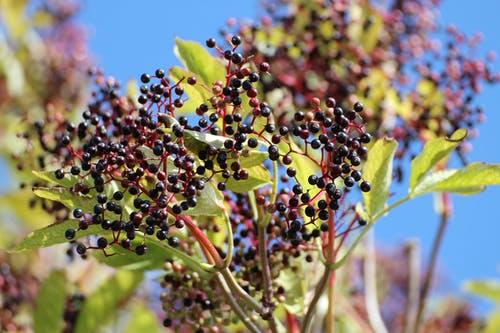





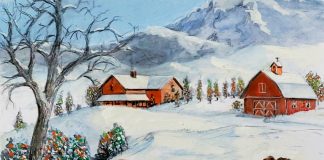




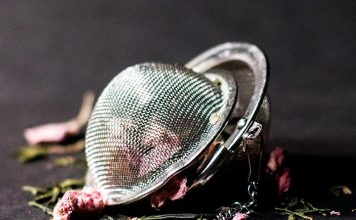
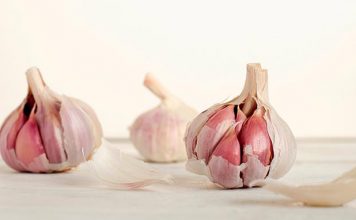
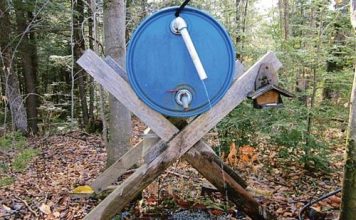

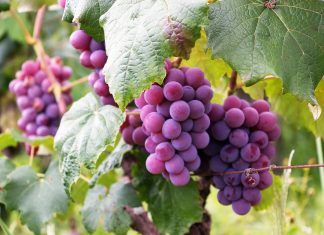
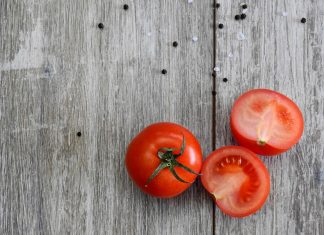
When my brother and I were young, we ate tons of Elderberries that were growing along the road in a field near our parent’s river lot. We ate them right off the stems. So delicious! No wonder we were so healthy. ??